Ishmael in Russian history
The rejection of the Danube region from Russia after the Crimean War had a negative impact on its development. The creation on the territory of the region of the all-European free safe zone of navigation on the Danube led to the rupture of economic ties with Russia. This undermined industrial production, led to an outflow of the population. In just two years (1860 and 1861), more than 20 thousand people left Southern Bessarabia (with the total number of the region being about 120 thousand).
By the time of reunification, the Izmail fortress was already destroyed (according to the terms of the Paris world in 1856), but its name stuck to the former suburb (forstadt), founded in 1809, three versts from the fortress, which greatly expanded and in 1812 – 1856 was officially called the city of Tuchkov.
The young city of Tuchkov was called in recognition of the merits of its founder - the Russian major general, the commandant of the fortresses of Bessarabia, Sergei Tuchkov. He personally identified the place where construction began, outlined the city blocks, laid the first buildings for the magistrate and the city administration, attracted many immigrants. However, during the years when the Danube was located in the Moldavian-Valash principality, the toponym “Tuchkov” was excluded from clerical work and forgotten by the population. In addition, since the days of the legendary Suvorov assault on Ishmael, the name of the Danube fortress turned out to be so glory in the mass consciousness of the Russians that it was transferred to the city that arose next to this fortress.
The first reliable information about the Turkish fortress Ishmael refers to the 1768 year, when the German traveler Nikolaus Kleeman in his notes described it as small and weakly fortified. Even before the construction of the fortress (in the middle of the XVII century), Ishmael had a port in which there were up to 500 ships. The fortress town numbered about 2000 houses, many trade shops, the population was mainly engaged in trade - every year merchants sent more than two thousand carts of salted fish to Polish and Russian lands. There was a slave market in the city. In addition to the Muslims, the Greeks, the Armenians, and the Jews lived in Izmail.
In July, 1770, the Russian army under the command of Peter Rumyantsev defeated the 150-thousandth Turkish army at Kagul. The corps of Lieutenant-General Nikolai Repnin pursued the 20-thousandth detachment of the Turkish cavalry, retreating to Ishmael. The garrison of the fortress after the Kagul battle was demoralized, rebelled and tried to seize the court to cross the Danube. Repnin's squad had four infantry squares, three hussar regiments and Cossacks, 7 – 8 in total, thousand people. 26 July (5 August) 1770, the Turkish cavalry, not daring to engage in battle under the walls of Ishmael, began a retreat to Kiliya along the road along the Danube. Repnin six versts tried to pursue the enemy, but fell behind and returned to Ishmael.
For the capture of the fortress, he sent Major-General Grigory Potemkin with three battalions of infantry. After a small skirmish, the Turks surrendered. During the occupation of the fortress, the Russians lost 11 people killed and 10 wounded. The 37 cannons, 8760 cores, 96 barrels of gunpowder and other property were taken as trophies in the fortress. About the attitude of the local population to the Russian troops says the fact that after the occupation of Ismail around 250 Moldovans from the surrounding villages joined as volunteers (Arnauts) in the Russian army to fight against the hated Turks.
To strengthen the fortress, Rumyantsev sent engineering major general Illarion Golenishchev-Kutuzov (father of Mikhail Kutuzov), as well as artillery major general Ungern von Sternberg. In early August, the main forces of the Repnin corps moved to the strong fortress of Kiliya, and the Russian river began to form in Izmail flotilla from ships and boats recaptured from the enemy; a shipyard was built for the construction of new ships. By the end of 1770, Izmail became the main support base for the new Russian Danube flotilla.
The first Russian commandant of the fortress, Izmail, appointed Colonel Dmitry Ivkov, who held this position until September 1774, when, according to the Kuchuk-Kaynardzhiy peace treaty, the fortress again fell to the Ottoman Empire. Ivkov has developed vigorous activity, in every possible way strengthening the fortress, participating in the construction of the shipyard. The commandant attracted Russian artisans to work at the shipyard.
The events of the Rumyantsev war showed great importance of Ishmael in the defense system of the Danube. Having returned the city, the Turks attempted to build a new, more powerful fortress on the site of the old fortification fortifications. For this, they attracted French and German engineers. However, the project of the second Izmail fortress was developed only in 1789 year. By the time of the next siege of Ishmael by the Russian army in 1790, he was not fully incarnated. Before the Russian wars, a wooden-earthen fortress appeared with a moat (width 12 m and depth to 10 m) and a shaft (height 6 – 8 m). The stone walls were only on the corner northwest and southwest bastions.
The main strength of this fortress was not in fortifications, but in the fact that behind its ramparts (the total length of fortifications — more than 6 km) over a vast area could easily hide and be easily supplied with a large river flotilla of a large number of troops. In fact, a huge fortified field camp arose here.
By the time of the second successful assault by the Russian troops 11 (22) of December 1790, the Ismail fortress had the status of Horde Kalesi (army fortress). Its garrison was about 25 thousand people (including 8 thousand cavalry) with 265 artillery guns. The food supply in Izmail was concentrated for a month and a half. Sultan strictly forbade the surrender of the fortress, declaring that in the event of surrender of the garrison or the capture of the fortress, its surviving defenders are executed anyway. The Russian command was able to concentrate under the walls of Ishmael a group of about 30 thousand people, half of which were irregular parts, whose weapons were not suitable for the assault.
Just like the first assault on the fortress, the capture of Ishmael in 1790 was strongly associated with the name of Grigory Alexandrovich Potemkin. His Serene Highness was the inspiration and organizer of the brilliant Lower Danube operation. It was carried out by joint efforts of the ground forces, the Black Sea Fleet, the Danube Flotilla, the Black Sea Cossack flotilla. Within two months, the Turkish forces were defeated and driven out of the lower reaches of the Danube from Kiliya to Galati. The blockade and the capture of Ishmael were the culmination of this operation.
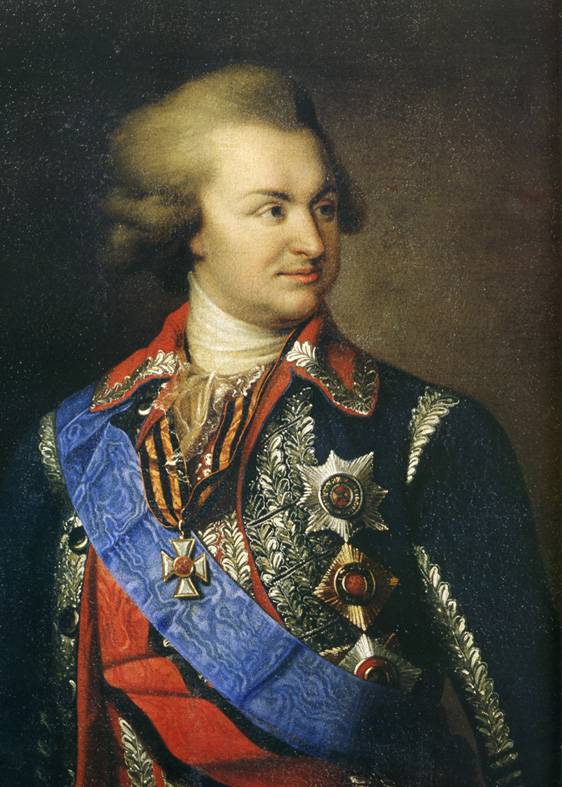
It was Potemkin who unmistakably identified the commander, who alone was able to master the last Turkish stronghold on the Lower Danube. Giving Alexander Suvorov instructions on how to prepare for an assault, His Serene Highness Prince anticipated the direction of one of the main attacks:
“I respect the weakest side of the city towards the Danube if I would start there so that, having risen, here, where I have to lay down (settle down) and even lead the attack, so if something happens, God save, reflections, there was where to turn.”
Troop training for the assault Suvorov finished in 6 days. The attacking forces were divided into three wings of three columns each. The forces of Major General De Ribas (9 thousand people) were to attack from the river side. The right wing under the command of Lieutenant-General Pavel Potemkin (7500 people) was preparing to strike at the western part of the fortress, the left wing of Lieutenant-General Alexander Samoilov (12 thousand people) - at the east. Cavalry reserves foreman Fedor Westfalen (2500 people) were on the land side.
The 10 (21) of December with the rising of the sun began the artillery preparation of the assault, in which participated about 600 guns. It lasted almost a day and ended in 2,5 hours before the start of the attack. At half past five in the morning the columns moved to attack. At dawn, it became clear that the rampart was taken, the enemy was forced out of the fortress and retreats to the inner part of the city. Russian columns from different sides moved to the center of the city. In urban areas, began a new, even more fierce battle. Particularly stubborn resistance from the Turks lasted until 11 am. Thousands of horses leaping out of burning stables rushing through the streets in rage and increased the confusion. Almost every house had to be taken in combat.
Around noon, the troops of Boris Lassi, the first to ascend the rampart, were the first to reach the center of the city. Here they met a thousand Tatars under the command of Prince Maksud-Giray. Tatars desperately fought and surrendered, only when most of the detachment was slaughtered. To support the advancing infantry 20 light guns were introduced into the city. About one o'clock in the afternoon, the Turkish defense broke up into separate pockets. The enemy continued to hold important buildings, tried to attack individual Russian troops.
The last attempt to change the course of the battle was made by the brother of the Crimean Khan Kaplan-Girey. He gathered several thousand horse and foot Tatars and Turks and led them towards the advancing Russians. In a desperate battle in which more than 4 thousands of Muslims were killed, Kaplan-Girey fell along with five sons.
At two o'clock in the afternoon the Russian columns joined in the center of the city, and at four o'clock the resistance of the enemy ceased. Ishmael fell.
Of the entire garrison, only one person could escape, having crossed the Danube on a log. 9 thousand Turks and Tatars were taken prisoner, of which the next day 2 thousand died from wounds. During the surrender, the commander of the Ismail group, Aydos-Mehmet Pasha, was killed, who uttered the famous words before the assault:
"Rather, the Danube will flow back and the sky will fall to the ground, than Ishmael surrenders."
The fortress took up 3 thousand pounds of gunpowder, 20 thousand cores and many other ammunition, 8 lanns, 12 ferries, 22 light vessels. In Russians, the total number of casualties was 4582 people: 1880 killed (of which 64 officer) and 2702 injured. Some authors determine the number of people killed to 4 thousand, and the number of injured people to 6 thousand, total 10 thousand.
Ishmael's epic assault somewhat overshadowed the colossal political significance of this battle. Since July 1790, when Austria ceased military operations against Turkey, Russia was threatened with diplomatic isolation. It was likely to open a second front of the allied Turkey Prussia. Feeling the support of the patrons (Prussia and England), the Ottoman Empire put forward obviously impossible conditions at the peace talks with Russia.
The diplomatic congress of representatives of Prussia, England, Holland, Austria and Turkey gathered in the Turkish city of Sistovo to work out the conditions for a Russian-Turkish peace treaty. “European diplomacy” was preparing a statement: if Russia, like Austria, does not immediately make concessions to Turkey, then a war will be launched against it on the western borders. The Prussian and Polish military contingents were already concentrating. Izmail Victoria sobered many "European partners." The all-European ultimatum of Russia did not take place.
At the height of the assault on 1790, the question of who would be the second Russian commandant of the fortress, Ishmael, was decided. A detachment of Mikhail Kutuzov attacked the south-western bastions and the Kiliya gates of the fortress. Bearing heavy losses, he was able to climb the ramparts, but, meeting the fierce resistance of the Turks, Kutuzov decided to retreat to the range of a rifle shot and reported this to Suvorov. The general-response’s answer was unexpected:
"I have already informed in Petersburg about the conquest of Ishmael, and I have appointed Kutuzov as the Izmail commander."
Using the forces of the reserve grenadier regiment and the surviving rangers, Kutuzov again rushed to the assault on the bastion. This time we managed to climb the shaft again and knock back the enemy with bayonets.
When Mikhail Illarionovich asked Alexander Vasilyevich why he appointed him commander at a time when the fortress had not yet been taken, the great commander answered:
“Kutuzov knows Suvorov, and Suvorov knows Kutuzov. If they had not taken Ishmael, Suvorov would have died under his walls and Kutuzov as well. ”
However, Kutuzov’s commandantry did not last long: the ongoing war required his presence in the active army.
The Lower Danube operation and the capture of Ishmael did not leave indifferent the inhabitants of the Danube and adjacent Balkans. As part of the Russian Danube army, 30 volunteer units were formed, which included Moldovans, Vlachs, Bulgarians, Greeks, Serbs and others. Nevertheless, after the conclusion of the Yassky peace treaty in 1791, Russia again had to be forced to leave Ishmael.
In the interwar period 1792 – 1806, the Turkish authorities rebuilt the Izmail fortress again. It became more compact and fortified, having existed until 1856. Construction was designed and headed by French engineer Francois Kauffer.
During the first two years of the 1806 – 1812 Russian-Turkish war, Russian troops made several unsuccessful attempts to seize the fortress city. In 1809, Ishmael underwent another siege on the orders of the new commander-in-chief of the Moldavian army, Peter Bagration. Take the fortress entrusted to Lieutenant-General Gregory Zass. At the end of August 1809, his detachment in 5, thousands of people, with 40 guns, stepped up to Ishmael and began his shelling. In early September, the Russian Danube Flotilla joined the shelling. The bombardment with small interruptions continued until September 13 (25), when the commandant Chelebi Pasha proposed to start negotiations on the surrender.
The next day, Russian troops entered Ishmael. Under the terms of the surrender of his garrison as part of 4,5 thousand people crossed to the Turkish right bank of the Danube, in the city there are about 4 thousand inhabitants. Trophies of war made 221 gun, 9 ships with 36 guns, 5 thousand pounds of gunpowder and a lot of shells.
In September 1809, Tuchkov was appointed commandant of the Izmail fortress. Due to the fact that in the 1812 year, Ishmael, with all Bessarabia, was annexed to the Russian Empire, the fortress under his leadership was located for quite a long time (until 1835 year).
Sergei Tuchkov made great efforts to increase the population of Izmail, his economic development, using his personal funds. If in 1809, 3250 Muslims and 569 Christians lived in the city, then only six months (from March to August 1811) 2200 people arrived in Ishmael, including 947 Ukrainians, 638 Russians, 168 Moldovans and others. After the annexation of Bessarabia in 1812, a considerable part of the volunteers who were part of the Bulgarian Zemsky troops, as well as the Nekrasov Cossacks who had moved from Turkey, settled in the Danube region. At the same time, the Nogais (Bucak Tatars) left Southern Bessarabia. In 1817, the population of the fortress and the neighboring town Tuchkova reached 9 thousand people, in 1856 year - 30,6 thousand inhabitants, the vast majority of whom are Russians and Ukrainians. Migrants were granted significant benefits.
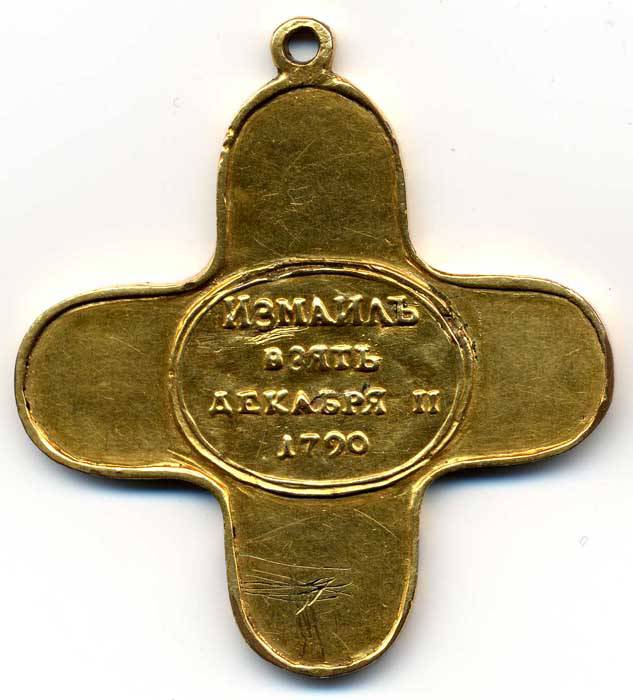
In the first floor. XIX century Twice a year in Izmail - Tuchkov were famous throughout Russia Voznesenskaya and Pokrovskaya fairs, which lasted 15 days. The main occupations of the townspeople remained craft, trade, fishing, cattle breeding and agriculture. Began to develop winemaking and breeding tobacco. The first industrial enterprises appeared in 1820-s: tanning, candle, three pasta and three brick factories. In 1830, the architectural appearance of the city is changing: administrative buildings, a hospital, a hospital, educational institutions are being built, Cathedral Square was laid down, the Intercession Cathedral was erected - an architectural jewel of modern Izmail. Under the leadership of the famous Petersburg architect Abraham Melnikov, stone stone trading lines are being built in the center of the city square.
Significant changes in the life of the city occurred in 1856, when it came under the authority of the Moldavian principality dependent on Turkey, and the Izmail fortress was destroyed. However, after 21, Russia returned to Ishmael again. In April, the 1877 of the year, predominantly a Russian-Ukrainian city, without a single shot, was taken by the troops of the Lower Danube detachment, Lieutenant General Prince Alexei Shakhovsky.
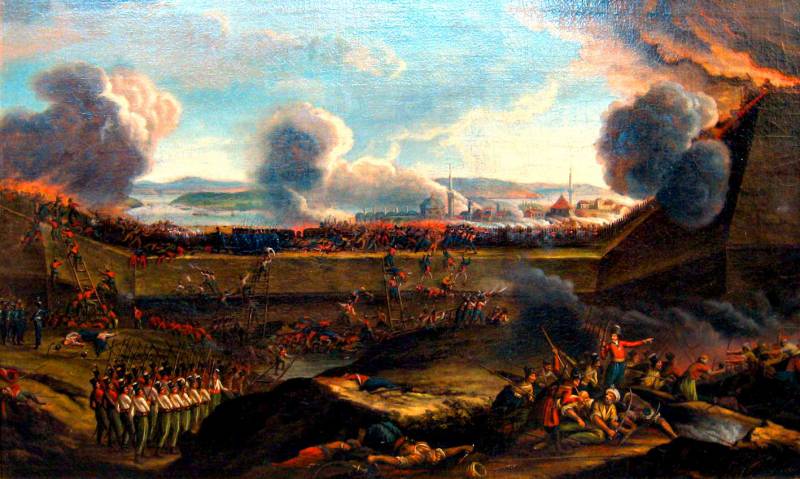
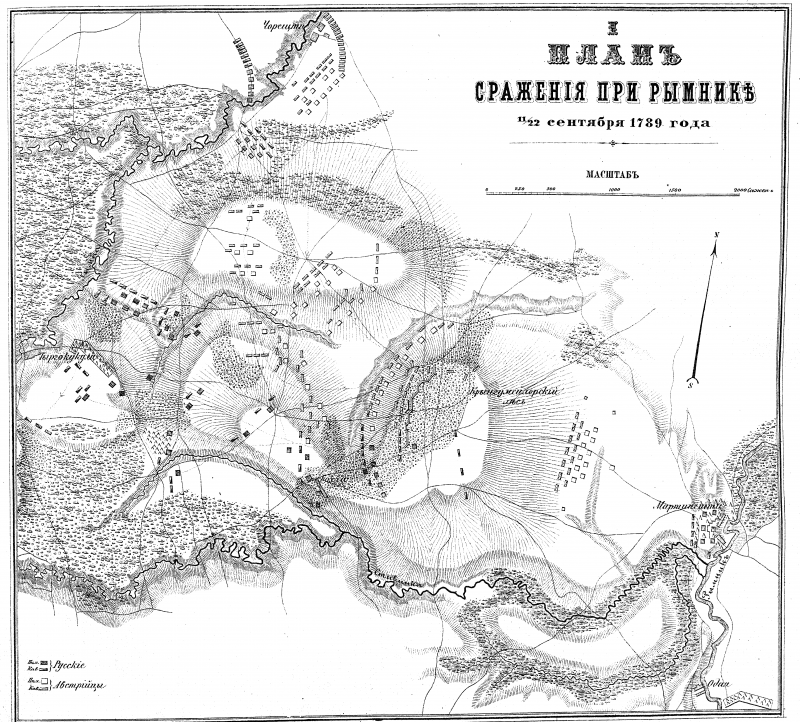
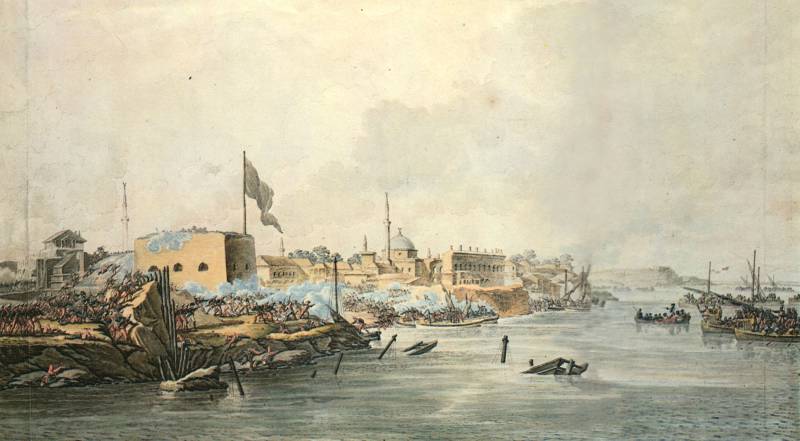
Information